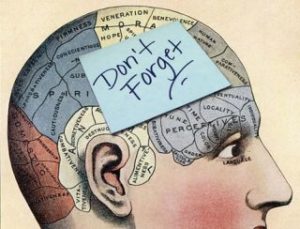There is a kind of musical memory that everyone can learn and improve, and it’s not about how many tunes you know.
 A good musician, while teaching a lesson or engaged in a rehearsal, can listen to an entire set of tunes, and yet keep in mind which parts were solid and where improvements can be made, noting ideas to heighten the impact of a phrase, smooth out a transition, fix a note mistake, change a bowing to bolster sound or timing, adjust a distracting ornament, and so on. A good lesson or rehearsal will include the chance to outline and work on all these points of improvement. And it’s only possible with a good musical memory.
A good musician, while teaching a lesson or engaged in a rehearsal, can listen to an entire set of tunes, and yet keep in mind which parts were solid and where improvements can be made, noting ideas to heighten the impact of a phrase, smooth out a transition, fix a note mistake, change a bowing to bolster sound or timing, adjust a distracting ornament, and so on. A good lesson or rehearsal will include the chance to outline and work on all these points of improvement. And it’s only possible with a good musical memory.
Challenge yourself to not only play a tune or part of a tune, but also to keep in mind ideas about what went well, what could be improved, and how to start making that improvement.
Play through a phrase, part, or whole tune, and, instead of stopping to fix something you don’t like, keep going but make a mental note, as if you were attaching a sticky-note to that spot in the tune. After you finish the tune (or part of it that you intended to play), either work on that spot on its own, or play the whole thing through again and see if you can use that mental sticky-note to prepare yourself and try to play it better as you go through it.
If you choose to work on a spot on its own, take out that phrase or measure or half-measure, and see if you can find out what’s causing the problem, in what way you’d rather hear it played, and what’s needed to make it sound the way you want it. There could be many elements to the improvement — it’s not usually about simply getting the right note. Mend your playing, see if that spot sounds better, and if so, play it through a few times to give your muscle memory a chance to get comfortable with the change before running through the tune again.
Often it is fun and a great challenge not to take that spot out on its own to work on but to simply try harder the next time you get to that spot, and try to improve it on the fly. Because you’ve made a “sticky-note” about it, you can try to prepare for it before you get there. It might not work the first few times but it’s an excellent and focused way to practice.
All of these efforts improve your musical memory and sharpen your mind.
Musical memory is far more than just remembering tunes, or memorizing notes. It has to do with having a feel for the profile of the tune (see article about “ear-mapping”), the feel of the bowing, whether a phrase feels like background or a highlight of the tune.
Above all, good musical memory structures a tune, sensing the order of phrases and how they relate to each other, so that when something crops up which could be played better, it belongs to a particular phrase of the tune — a questioning phrase, an answering phrase, a concluding phrase, a surprise ending, a transition into a new tune — you can locate it and make sense of it.
To learn this musical language, and to build your musical memory, start small. Make one mental sticky-note about a spot you want to improve, and either work on that spot on its own before inserting it back into the tune, or work to improve it on the fly as you play the tune again. It might take a number of tries to do this, but once you can recall one “sticky-note” you can add others, and your tune can become a rich layer-cake of musical ideas.
What’s more, your mind and ears become sharper, and you get to focus on musical ideas of more lasting meaning than simply whether you missed a note. And believe it or not, these ideas apply to all levels, so don’t wait until you think you have the notes “under control” to try developing your musical memory.
©2019 Ed Pearlman
Love the idea of a mental sticky note and trying to correct or improve a part by playing through all the way and trying to get it without always and only isolating the problem in a phrase.
I like the idea of sensing the order of the phrases and how they are related to each other. This article awakens an awareness of the bigger picture, and puts the smaller parts of things we’re doing when practicing into a bigger context. Knowing these things help give more purpose to practice.